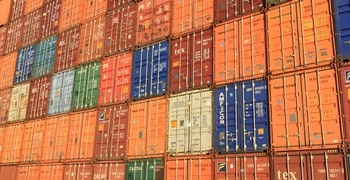
What Trump’s proposed 100% tariff on foreign-made films might mean for Hollywood and tax compliance
While the focus on President Donald J. Trump’s fluctuating tariff on Chinese goods has taken center stage since his inauguration, his proposal to impose a 100% tariff on all foreign-made movies has caught the attention of the global film industry. The president’s plan is positioned as a way to bring jobs and productions back to the United States, but it could complicate matters for film companies navigating an already complex world of indirect tax compliance.
Let’s take a closer look at what this tariff might mean, specifically how it diverges from existing trade policies and the ways it could impact how movie studios manage global operations and tax obligations.
What’s being proposed and why?
In May 2025, President Trump announced via his social media platform a plan to impose a 100% tariff on all films produced outside the United States. The rationale? To protect what he calls a “dying” Hollywood, citing foreign incentives that lure U.S. filmmakers abroad as unfair competition and a national security threat.
The Trump administration argues that generous tax credits and subsidies offered by countries such as the U.K., Canada, and Australia have compelled U.S. studios to produce films outside of domestic locations. These global incentives, the administration claims, weaken the American film industry by undercutting domestic jobs and hollowing out production capacity.
In response, the tariff is positioned as a tool to discourage outsourcing and redirect studio spending to U.S.-based productions. Commerce Secretary Howard Lutnick has said the administration is “on it,” suggesting regulatory action is imminent.
How is this tariff different from other tariffs currently in effect?
Tariffs are typically levied on goods that physically cross borders. Most are set at rates between 5% and 25%, and they’re often applied selectively based on country of origin or product category.
Trump’s proposed movie tariff stands out for three reasons:
- Scope and rate. At 100%, it’s significantly higher than most tariffs currently in effect, even higher than the current 30% rate imposed on Chinese goods.
- Content-based targeting. It targets a creative output, not a tangible commodity or manufactured good.
- Global application. The tariff wouldn’t focus on a single nation. It would apply to any film produced outside the U.S., regardless of who produced it, where it’s being distributed, or how it’s funded.
This makes it more than a trade policy — it’s a directive aimed at reshaping where and how creative content is made. That has important implications for both tax policy and business operations.
Are tariffs normally applied to films?
Generally, no. And that’s because tariffs typically only apply to tangible personal property (TPP), not digital content, which is what most films are today. But there are instances where film can be considered TPP, which is where the issue gets complicated.
Tangible or digital?
Physical copies of films — like DVDs or Blu-rays — are considered tangible personal property (and may be subject to sales tax when sold at retail in the U.S.). However, most film consumption today is digital. Streaming services, digital downloads, and theatrical exhibition rights are often categorized as digital goods or licensing transactions, and their taxability varies significantly by jurisdiction.
- Digital film licensing may be exempt in some states and taxable in others, particularly if bundled with physical goods.
- Streaming services face inconsistent tax treatment across the U.S. Some states apply communications or entertainment taxes, while others don’t tax streaming at all.
Do tariffs apply to films?
Currently, no. Films produced abroad but distributed in the U.S. — whether theatrically or digitally — do not typically trigger import tariffs. That’s because content isn’t “imported” in the traditional sense of goods crossing a border. Rather, it’s licensed, downloaded, or streamed, which falls under a different set of legal definitions. Simply put, tariffs don’t typically apply to intangible goods or services.
Trump’s proposal would challenge that assumption by redefining foreign-produced films as importable goods, effectively placing a tax at the point of distribution or sale. That could potentially mean:
- Licensing deals would face an added cost burden.
- Streaming platforms may be required to distinguish between domestic and foreign-produced content for tax purposes.
- Studios with global production footprints may have to reassess the cost-benefit of shooting overseas.
In short, the tariff breaks new ground by attempting to apply traditional trade policy tools to intangible, digitally distributed products.
What are the impacts on indirect tax compliance?
Film production is already a globally integrated, tax-complex business. The proposed tariff introduces a new layer of uncertainty — and potentially, new compliance requirements.
1. Determining taxable content
Studios and distributors would need clear guidance on what qualifies as “foreign-made.” Would it be based on the location of principal photography, production spend, the director’s nationality, or some other metric? Without clarity, businesses could face inconsistent audits or enforcement.
Tax and finance teams would likely need to:
- Track origin data for every film asset.
- Maintain documentation to support origin classification.
- Reconfigure accounting systems to flag content potentially subject to tariffs.
This would add complexity to financial operations, especially for companies with hundreds of film assets and distribution partners.
2. Cross-border production strategies
The tariff could prompt studios to relocate productions to the U.S. to avoid penalties — but doing so may conflict with existing global incentives. Countries like the U.K. and Canada offer attractive tax credits that can reduce production costs by up to 30%. Studios will need to weigh these savings against the cost of the tariff.
Tax planning may shift from a jurisdictional approach (chasing the best incentives) to a compliance-first model (avoiding potential tariff liability).
3. Streaming platform compliance
For platforms like Netflix, Disney+, and Amazon Prime Video, the compliance burden may fall on catalog management. If a film produced overseas is subject to a 100% tariff, will that apply to every view, every license, or just the initial U.S. distribution deal?
Streaming companies may need to:
- Map catalog origin metadata to tax settings.
- Calculate tariff-related obligations per transaction.
- Remit and report accordingly, likely on a jurisdiction-by-jurisdiction basis.
Compliance in a shifting landscape
Trump’s proposed 100% tariff on foreign-made films aims to boost domestic production — but it could drastically reshape how content creators, distributors, and platforms think about global tax exposure. For an industry already juggling inconsistent sales tax rules, complex licensing models, and multilayered incentive structures, this adds a new and unpredictable layer of compliance.
Will the outcome of this proposed tariff have a Hollywood ending? When it comes to U.S. tariffs, it’s hard to predict.
How can businesses prepare for tariff updates?
A proposed tariff over films is only the tip of the iceberg. The truth is that businesses deal with changing tariffs all the time. In 2023 alone, there were 337 international rate updates and 6,779 international taxability updates.
The key to handling all this change and streamlining international trade compliance is customs duty automation.
For businesses engaged in international trade that are having trouble assessing and adapting to the changing dynamics of cross-border duties and tariffs, Avalara is here to help.
Avalara Cross-Border connects all pieces of the global tax and tariff puzzle by delivering real-time calculation of customs duties and import taxes, and by automating tariff code classification. We stay on top of regulatory changes worldwide, so businesses don’t have to. It’s the ideal trade solution for online sellers seeking to establish a modular, best-of-breed platform to power their cross-border needs.
“The Avalara suite of compliance services can help you stay on top of this rapidly changing environment, giving you peace of mind that you are keeping pace with the changes,” says Craig Reed, General Manager of Cross-Border at Avalara.
Let us help you stay ahead of change and continue to grow globally. Contact us today to learn more.

The Avalara Tax Changes midyear update is here
Trusted by professionals, this valuable resource simplifies complex topics with clarity and insight.
Stay up to date
Sign up for our free newsletter and stay up to date with the latest tax news.













